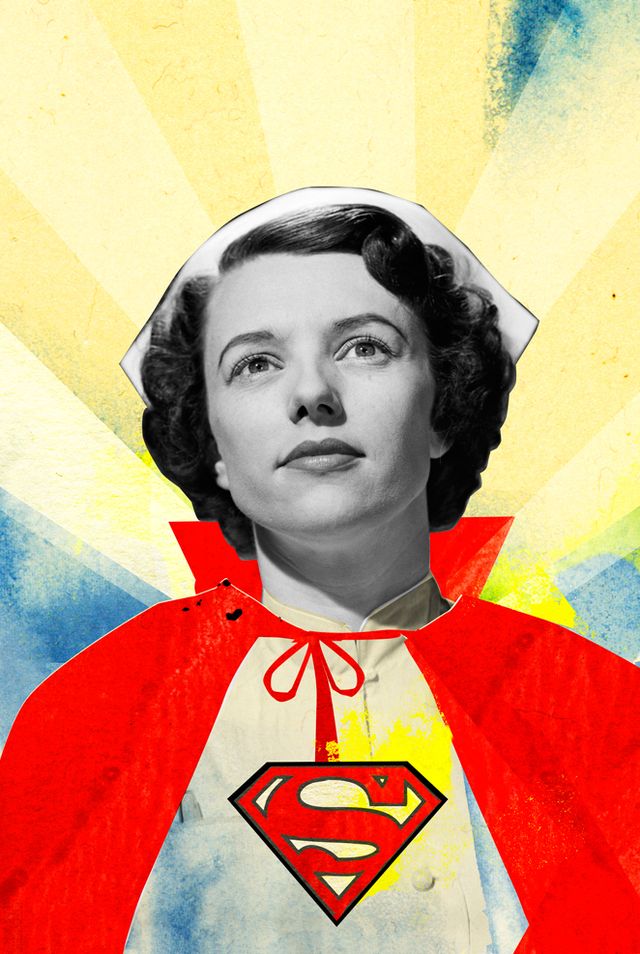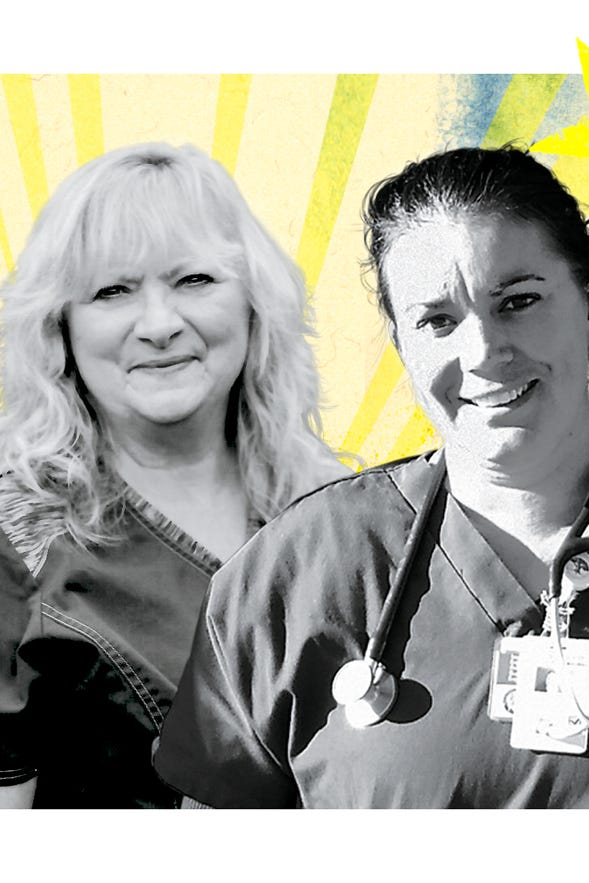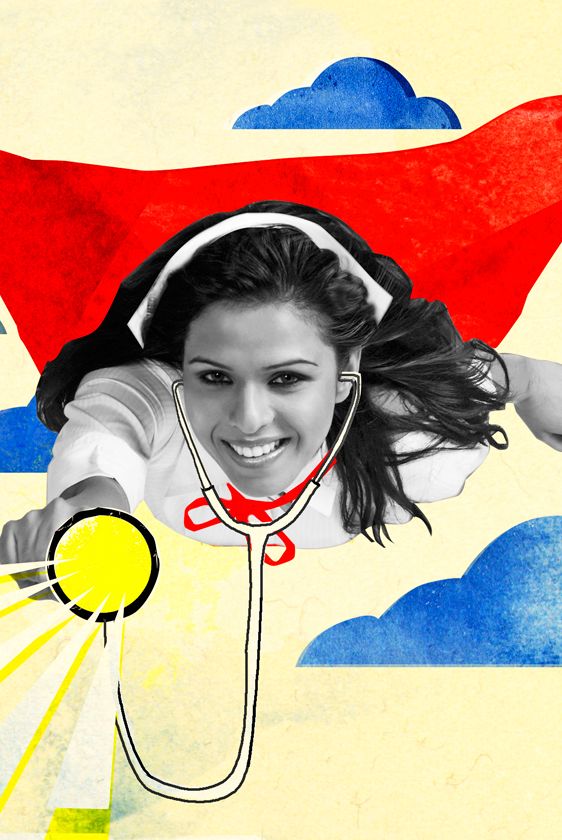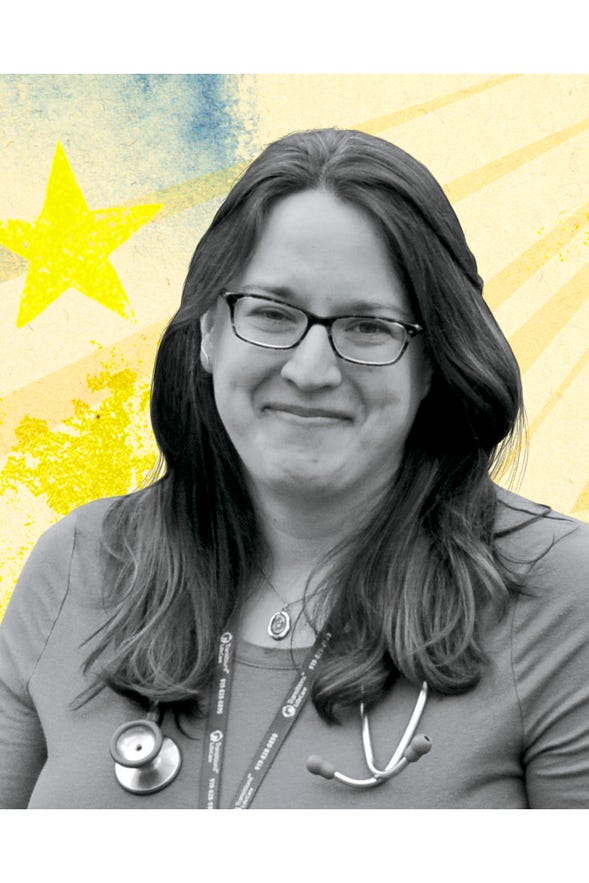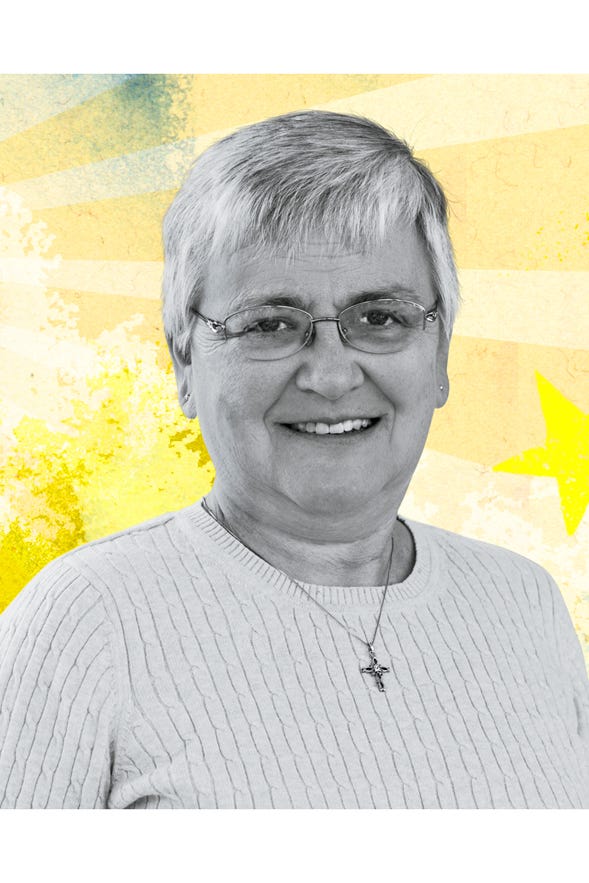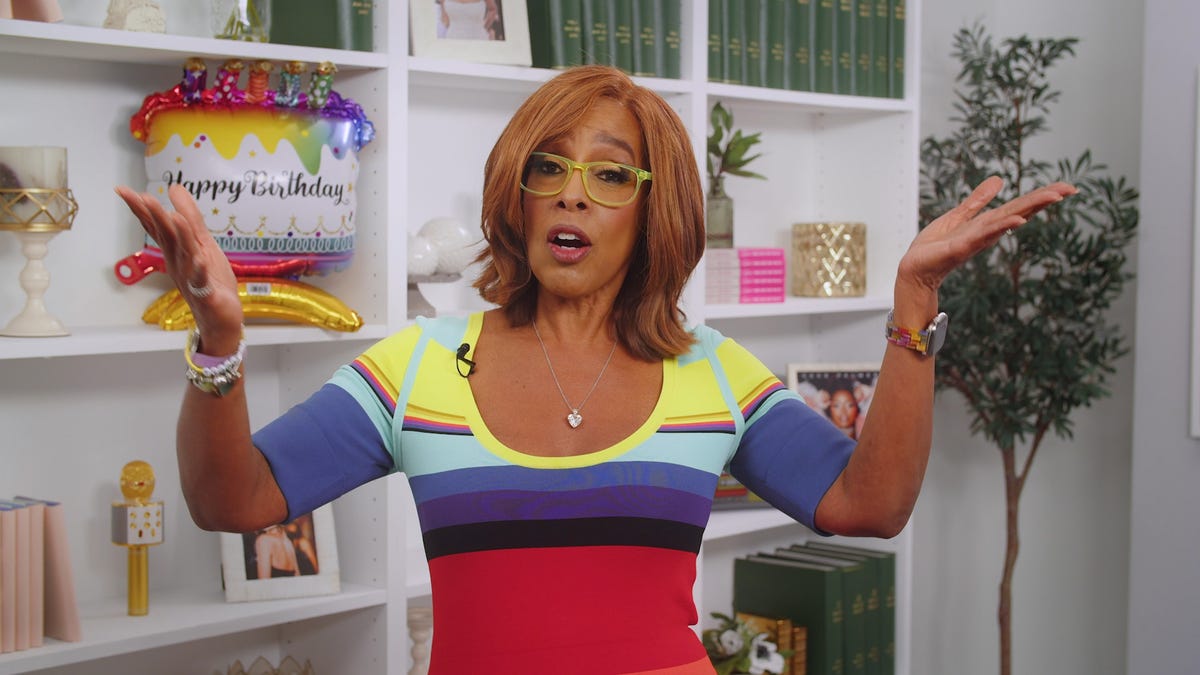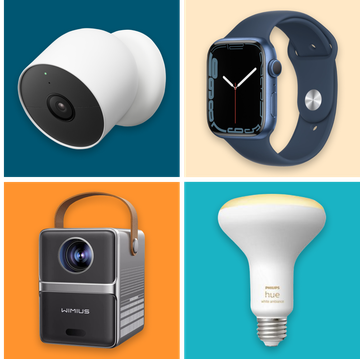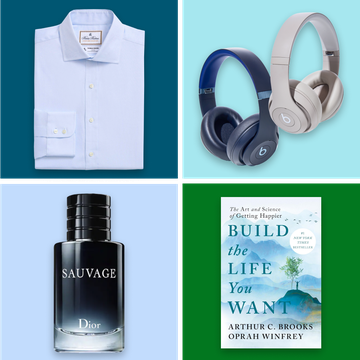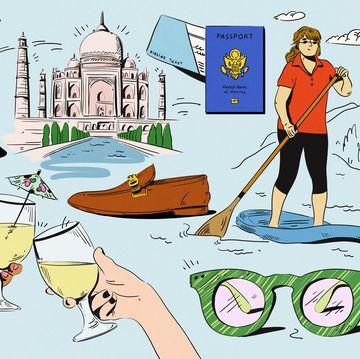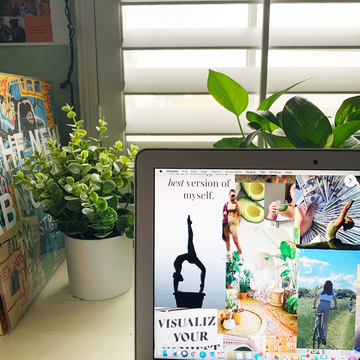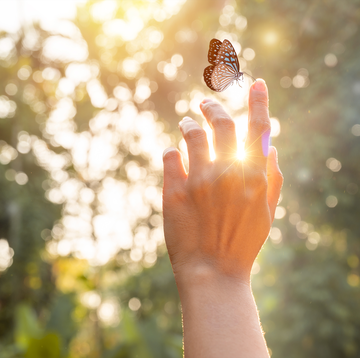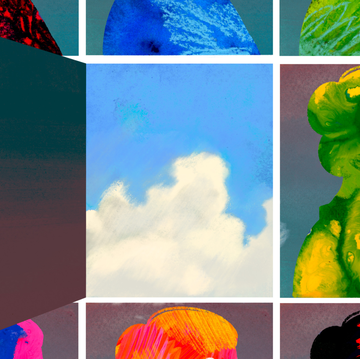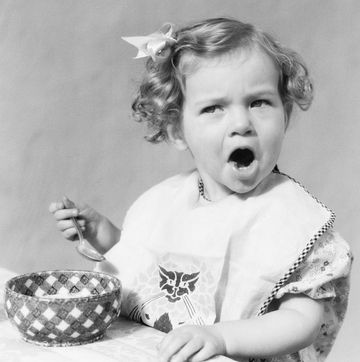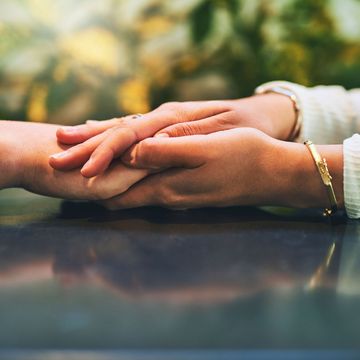Nurses work tirelessly in the name of safety, comfort, and care. Meet five women who saved the day—or at least mightily improved it.
Karen Davis and Nichole Jolly
Through the windows of the Adventist Health Feather River Hospital in Paradise, California, Nichole Jolly could see a terrifying orange blaze. At 7:15 that morning, Jolly’s boss had informed the staff of a fire on the other side of the canyon. Ten minutes later, the loudspeakers blared, “Code black! Get out now!” The fast-moving flames, part of the deadly Camp Fire of November 2018, were licking the trees behind the hospital.
Jolly joined her best friend, fellow surgical nurse Karen Davis, in lining up the tiny hospital’s 67 patients in the ER and loading them into vehicles. In 45 harrowing minutes, all the patients were on their way to nearby medical centers.
Jolly and Davis performed a final sweep of the now smoke-filled ER, sprinting out before the fire doors locked shut. Knowing that local hospitals would need their help, they planned to drive to Enloe Medical Center in Chico, but within minutes of heading down the two-lane road—their only way out—a fire tornado, born from high wind gusts and flaming embers, blocked their way. Suddenly, Davis’s truck caught fire. Jolly’s car stalled.
Seeing only smoke inside, she pounded on the window and shouted Davis’s name—until the fire roared so loud and the air grew so hot that she had to flee. She stumbled through the smoke and into, of all things, a fire engine. There was only one direction the truck could go: back to the hospital.
But Paradise was burning. Terrified residents were seeking safety at the hospital. Jolly joined staff members who had set up a triage area in the parking lot—and cried out when she saw the nurse working next to her. “You’re alive!”
“You’re alive!” shouted Davis. She’d been sitting, dazed, in her car, listening to her daughter on the phone imploring her to get out of there, when Jolly’s knock compelled her to make a run for it.
For the next two hours, the two friends worked as a team. Jolly was one of the few staffers left who knew the codes to the locked ER and ICU doors, so she and Davis braved the suffocating smoke to gather supplies.
Outside, Davis distributed blankets and vending machine snacks, and Jolly dressed wounds and monitored heart rates. “I was fixing problems while Karen was making everyone feel safe and at ease,” she says. By 4 p.m., Davis and Jolly were able to leave the scene in a coworker’s car. Jolly texted her mother, a nurse at Enloe, to check on her patients there. Only later did Davis and Jolly tend to themselves: Davis took her overdue blood pressure medication, and Jolly was treated for burns and smoke inhalation.
One of Jolly’s charges from that day later tracked her down on Facebook: “You were my nurse and you were so calm.” But both nurses say the credit goes to their entire team. Davis adds, “Taking care of patients took the focus off our fear.” —Jennifer Chen
Sandy Cayo
In 2008, Sandy Cayo was working as a clinical nurse in hematology, oncology, and bone marrow transplant when she noticed something. “African American transplant patients had more complications than white patients,” she says. “And many were dying.” Cayo realized this was likely because only about 4 percent of bone marrow donors are black (47 percent are white), so black patients are significantly less likely to find their perfect, lifesaving match. The discrepancy stayed with her, and three years later, when pursuing a doctorate in nursing practice, she chose to focus on the health disparities African Americans face.
People of color are strongly mistrustful when dealing with medical research—for good reason. Between the Tuskegee study (in which U.S. government scientists followed hundreds of impoverished Southern black men with syphilis over decades without ever offering proper treatment), the case of Henrietta Lacks (the African American woman whose cancer cells were taken and used for research without her consent), and many less publicized abuses, the medical establishment has a lot to answer for.
But Cayo is tired of seeing patients of color miss out. So she’s started organizing events focused on informing members of underserved black communities that sharing their medical data is critical to improving health outcomes. Most recently, on a cold afternoon in January in a common room at St. Paul Community Baptist Church in Brooklyn, Cayo and nine colleagues from the National Black Nurses Association served up jerk chicken, rice and peas, sweet potatoes, mac and cheese, carrots, greens—and a side of free blood pressure screenings.
The nurses emphasized that when people of color aren’t included in research, they’re left out of discoveries that could one day save their lives or those of their loved ones. Afterward, a participant told her, “We’ve never seen researchers who look like you and explain things the way you did.” This spring Cayo will co-host another event in Brooklyn, at which she’ll encourage people to register with the All of Us Research Program, whose goal is to gather lifesaving information from more than a million Americans. Says Cayo, “The impact will be felt for generations.” —Mary Pauline Lowry
Sharon T. Smith
It’s the most dreaded phrase to come from a doctor’s mouth: “There’s nothing more we can do.” In other words, this is the end.
But this is where Sharon T. Smith’s work begins. As a hospice and palliative care nurse practitioner, Smith tends to the sickest of the sick. She covers four North Carolina counties in her Honda Fit, visiting people where they live.
Often she can bring relief simply by adjusting a patient’s position in her chair or fetching a glass of cold water and sitting with her while she sips. A key part of her job is “listening to someone’s story and bearing witness to their journey through illness,” Smith explains. Laura Hind, 39, who has a degenerative disk disease and has been Smith’s patient for about a year, says, “It’s like having a best friend come and visit. With Sharon, I don’t mind discussing things that would be too hard to discuss with anyone else.”
Smith came to her branch of nursing two years ago after working as an NP in an outpatient brain tumor clinic. One patient, a lawyer in his early 30s, decided to discontinue his treatment because it was causing intolerable side effects and wasn’t working. After he died, his mother told Smith that he’d suffered immensely, his body racked by seizures right up until the end. “I think of that often,” says Smith.
For three years, Smith has been sharing her ideas about focusing on the whole person, not just their illness, with Duke medical students as part of a course on how to interact with and examine patients. “Even when there is no cure,” she says, “there are still many ways to bring patients comfort and peace.” —Melinda Wenner Moyer
Deborah Reed
The 100 farmers sitting in the rec hall couldn’t stop talking. One confessed a fear he’d been keeping private: His father had Alzheimer’s, and after decades of rising with the sun, walking out to the fields, and climbing aboard his tractor, he couldn’t be persuaded to stop. Even though he didn’t have keys, he could still get hurt. The son fretted.
What brought the farmers out of their shell wasn’t a town hall meeting; it was a seat at one of the hottest shows in town. In community theaters across Kentucky, Virginia, and Tennessee, farmers have been gathering to watch low-budget plays about a topic full of heart and drama: health and agricultural safety.
Across the room, a middle-aged man said he’d faced and solved a similar problem: When the family finally moved the tractor out of sight, the grandfather stopped trying to drive it. "We may have saved a life that night,” says Deborah Reed, PhD, a professor of nursing and agricultural health at the University of Kentucky and the creator of these events.
Throughout the country, there were an estimated 58,385 farm injuries (more than six every hour) in 2014, and 28 percent of farm operators are older than 65, according to data from 2012, the most recent available. More than 97 percent of the two-million-plus farms in the U.S. are family-run, many with ten or fewer employees—making them exempt from the federal law intended to keep workers safe. “These farms are self-regulated, which means if someone’s working with machinery and gets his arm amputated, it’s his responsibility,” says Reed, who herself comes from a long line of Kentucky farmers.
Reed realized in 2012 that with no one looking out for them, farmers need to be informed enough to protect themselves. Pamphlets were easy to ignore, though, and farmers had no patience for lectures. “They learn their occupation by living it and listening to their peers,” says Reed.
She researched readers theater, a type of pared-down performance in which actors read from scripts. In 2014, with a grant from the CDC, Reed launched Farm Dinner Theater. At nine sites across three states, she partnered with locals to create scripts about pressing health and safety issues and recruited reader-actors. Advertisements in newsletters and on the radio enticed farmers to reserve tickets. “We wanted it to feel like a night out,” Reed says.
The “reviews” have been terrific: Nearly 40 percent of theatergoers shared their new knowledge with non-attendees, and 60 percent made changes in their health or farm work behavior within two weeks. Every performance has a waiting list, and Reed developed an online tool kit for communities to stage their own shows.
Duval and Eleanor Sims, who own a 140-acre cattle farm in Stanford, Kentucky, were honored to have been cast in a performance. Two years later, neighbors still talk about how much they loved the show. The Simses, too, have taken their roles to heart. “Before, when I’d get up on the ladder, I wouldn’t ask for help,” says Duval, 74. “Since the show, she comes with me.” Eleanor adds with a laugh, “He says I have us on granny time, but we both know it’s safer that way.” —Kate Rockwood
For more stories like this, sign up for our newsletter.
